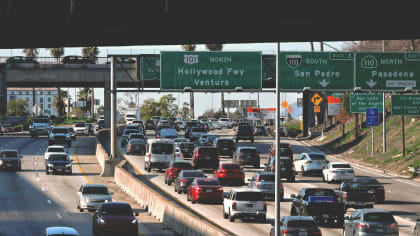Why Do We Drive Monochrome Cars?
Published on Sun, Jan 31, 2021
By: The LACar Editorial Staff
It seems like the flashy colors of the 1950s-1970s have all but disappeared from our automobiles. But now, Volkswagen thinks that may change.
Sometimes if you’re stuck in traffic these days, it seems like you’re living in a black-and-white movie. Countless shades of grey, cream, and midnight colors seem to be the choice for most new vehicles.
Last year, U.S. car buyers chose white more than any other color, followed closely by silver and black, according to experts in automotive paints.
This trend has spanned a decade now, the culmination of an evolution to muted colors stretching back 70 years. But there seems to be a glimmer of hope.
Here’s a fascinating study by Volkswagen.
___________________________________________________________________
“Color is always shifting, and our color perception is always evolving depending on what we see, what we observe, and what we live with,” said Volkswagen Senior Color and Trim Designer Jung Lim “Limmy” Park.
Old films of American highways from 1950 to 1970 captured the spirit of the era with colorful hues of aqua, cherry red, salmon and gold – a common sight on the road at that time. From 1970 to 1990, drivers started to transition towards neutrals and gravitated towards browns, greens and beiges. Today, variations of white, black, gray and silver make up over half of the market, leaving just 21 percent of cars sold in 2020 in the red, green or blue family. Americans reportedly favor the color black for luxury vehicles, and gray has replaced silver for all vehicles due to its perception as a more upscale and modern color.
“Silver used to be way more popular than gray, but it has really flipped,” noted Park. “Gray brings so many variants from cool to warm, dark to light, luxurious shimmering to outdoorsy flat effect. Thus, gray speaks more to the persona that drivers want to communicate.”
At Volkswagen, color design is inspired from a multitude of sources – from nature, food and athletics, to new digital technology and virtual experiences. Determining the color goal at the beginning of a vehicle project allows the color designers to create the perfect color palette for the model’s intended driver. Understanding the desires of the customer goes hand in hand with selecting colors that complement the vehicles’ body style and influencing industry color trends.
Color design “is complicated and a complex theory that depends on the design of the car, type of the car, the size of the car and also types of trends that project on certain demographics and lifestyles,” said Park.
While color trends in fashion, interior design and technology are going global, automotive color trends are still highly regional. It’s not just cultural preferences; a red in the United States can look different from a red in Germany due to the surroundings of that region.
“Working in the color world, I learned that Asia Pacific, Europe and North America have very distinct color preferences,” said Park. “For example, Asia Pacific is actually the least colorful [region] … and in Europe, compared to North America, gray has always been more popular than silver, as has been blue.”
“Color preferences really reflect the unique social and cultural trends and even geography [of a region],” Park added.
Volkswagen has continued to experiment with bold colors even as market preferences move towards shades of white and black, from the Kurkuma Yellow of the Atlas and Arteon to the Spektrum program for the Golf R that allowed buyers a choice from 40 vibrant shades.
“The colors found on the original Buses and Beetles are iconic to Volkswagen and continue to be recognized even as the colors are no longer in production,” Park explained. “The bright contemporary yellow on the Volkswagen ID. Buzz concept is a great example how the original color image could be reinterpreted for the high-tech and it is not available in other places but in Volkswagen.”
Market demands for black, white and monochromatic shades in between will continue, Park says, but consumers are showing an increased appetite and interest in returning to bright and bolder colors. The reason? Because so much of our lives are now filtered through screens – from phones to tablets to computers to televisions – a certain segment of drivers will want vehicles that visually pop in real life as they do virtually.
“We are all so impacted by our digital life through the pandemic, and the colors you mainly see are [on] your screen more than actual physical objects.” said Park. “The future is getting colorful, for sure.”




